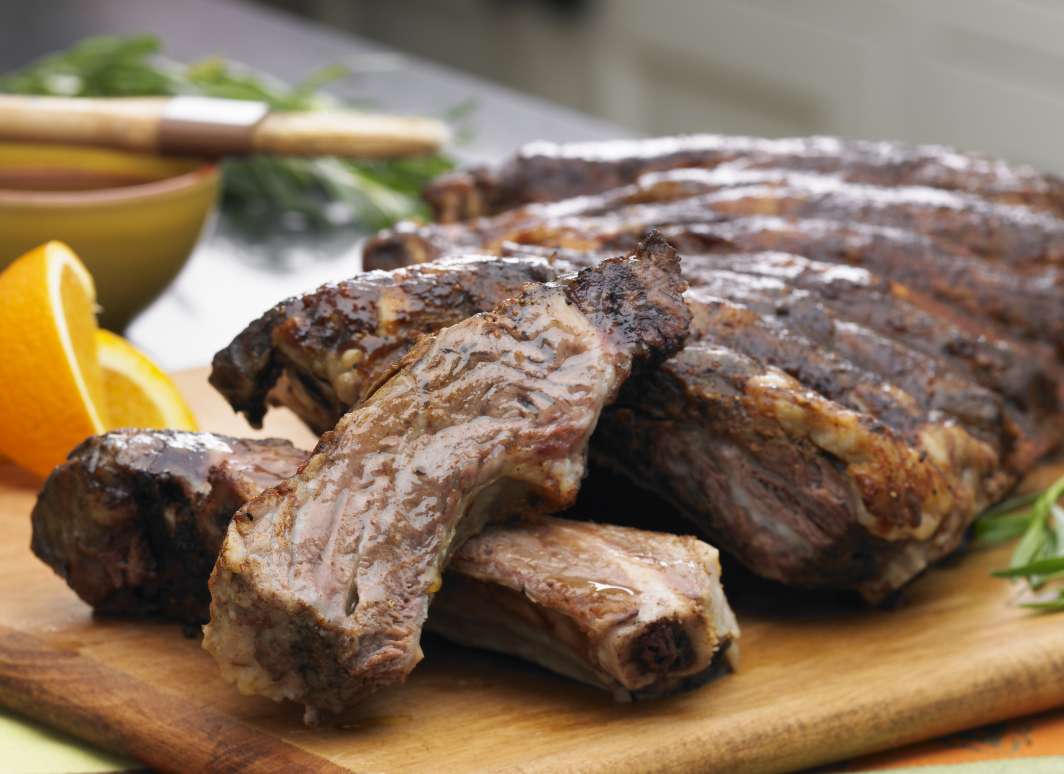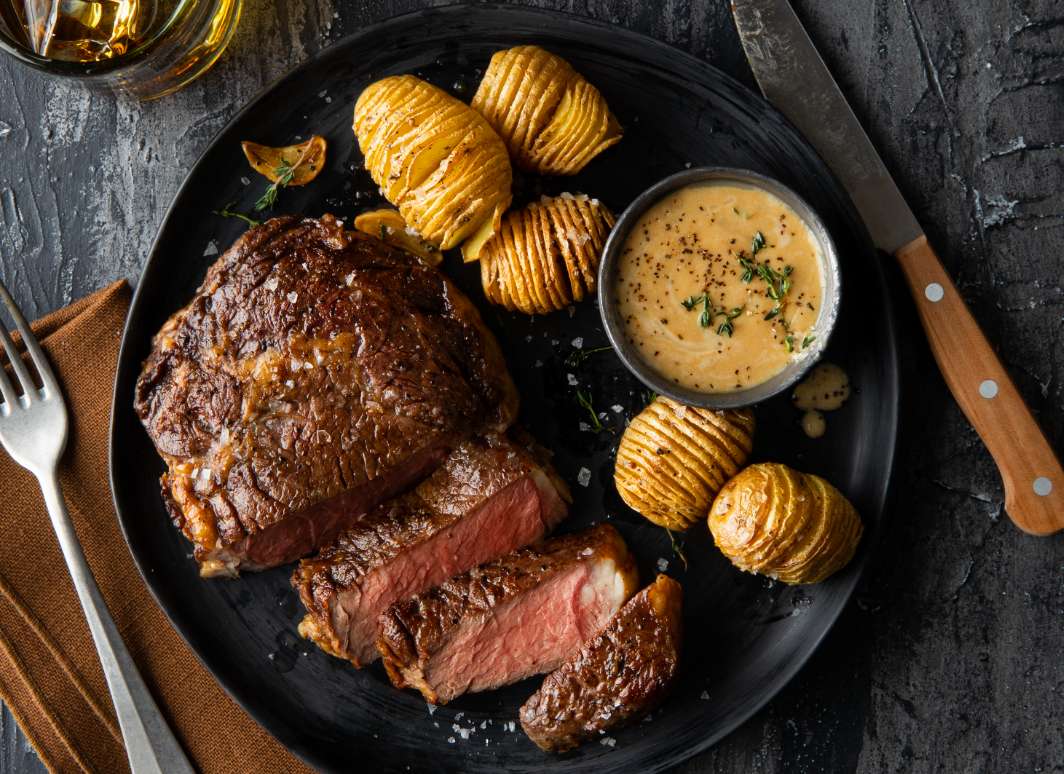Beef Flavors and Dishes of North America

The vast stretches of North America invite you through winding mountainous regions, along lazy back roads, across roaming plains, deep into rich forests, and beyond any limits of your imagination. Yet across the endless miles of possibility and character as infinite as the flavors that welcome you in, it’s always a meal that connects us and brings our hearts back home, and there’s no greater taste of comfort than beef.

The Carolinas
Often said to be the birthplace of barbecue in the U.S., the east coast offers many unique flavors. North Carolina focuses on traditional vinegar-based sauces with a smokey, savory, and tangy flavor, while a typical western South Carolina barbecue sauce is heavy on the tomato and sugar, with just a hint of spice. In the midlands, the condiment of choice is “Carolina Gold” – a zesty concoction of mustard, vinegar, brown sugar, and assorted spices.

Texas
Everything is bigger in Texas and that certainly holds true for barbecue, as you can expect vast flavor variations across the state. In east Texas, you’ll find barbecue with a sugary tomato sauce marinade smoked in hickory wood. In Central Texas, the preferred method is coating the meat in a thin crust of dry spices then cooking low and slow over fresh-cut oak or pecan wood. Central Texas focuses on the meat itself and is often served sauceless, with the side dishes playing second fiddle to the hero of the meal. South of Austin, sauce is king. Meats are soaked in a thick, sweet, molasses-based marinade, helping to keep the meat moist throughout a lengthy smoking process. Lastly, west Texas barbecue utilizes historic grilling techniques, inspired from the days of the West where cattlemen cooked directly on open flames with simple yet savory seasonings.

Kansas City, Missouri
Kansas City is known for a wide variety of barbecued meats, but their signature dish happens to be burnt ends – arguably one of the most sought-after pieces of the whole brisket. Kansas City barbecue is also notorious for its signature sauce, a thick tomato-based mixture of sweet and spicy, often applied immediately after cooking.

Alabama
Alabama barbecue doesn’t differ much from its Carolina and Memphis cousins when it comes to the choice of meat but stands apart with its white barbecue sauce innovation. Their white barbecue sauce is made using a mayonnaise base, that is flavored with mustard, brown sugar, and spices and is great for both basting and dipping.

Newfoundland & Labrador
Named after one of the main characters from the popular comic strip “Bringing Up Father”, Jiggs Dinner is a meat dish that is traditionally prepared on Sundays in Newfoundland and Labrador. If you’re eating Jiggs Dinner, you can expect pieces of salted beef reminiscent of corned beef, along with boiled potatoes, carrots, and turnips, and a serving of figgy duff – a bread pudding with raisins, molasses, and brown sugar.

Calgary, Alberta
Heavily influenced by Chinese cuisine, ginger beef was invented in the mid-1970s by George Wong at the Silver Inn restaurant in Calgary, Alberta. The dish is made by breading and deep-frying thin slices of marinated beef. After cooking, it’s coated in a sauce of ginger, vinegar, soy sauce, Chinese wine, sugar, and crushed chili peppers, and commonly served with accompaniments such as rice, carrots, and bell peppers.

The Rocky Mountain Range
(Great Plains, Saskatchewan south to Texas)
While some may turn their nose up at the thought of consuming Rocky Mountain oysters, the dish is widely popular across the great plains. The dish makes use of bull testicles, derived from castration – an important step in herd management and ranch safety. The organs are skinned, coated in a flour-based batter, seasoned and deep-fried. Known as prairie oysters in Canada’s great plains or calf fries in Texas and Oklahoma, you can expect to find them as both fast-food and as hors d’oeuvres at fine steakhouses.

Chicago, Illinois
One of Chicago’s best-known beef dishes is the Italian Beef Sandwich, which some say date back to the 1930s. Thin slices of roast beef sourced from the bottom sirloin, top round or bottom round are piled high on an Italian roll, au jus style. The sandwich is typically topped up with sauteed green Italian sweet peppers.

Hawaii
Most Hawaiian barbecue utilizes tropical flavors such as passion fruit, pineapple, and Asian-inspired ingredients such as soy sauce, sesame oil or other local ingredients. Rather than whole cuts, many dishes incorporate thin-sliced flank, sirloin, and chuck steak, often served with tropical, sweet and smokey marinades or sauces.

Philadelphia
Perhaps the most popular sandwich in the region, the Philly Cheesesteak is made from thin-sliced roast ribeye or top round which is then quickly browned on a flat top before serving on a hoagie roll. The dish, created in the early 1930s by Pat and Harry Olivieri, originally included provolone cheese. Today, it’s not uncommon to see Cheez Whiz used in place of the provolone and a little hot sauce added.

California
California-style barbecue is also known as Santa Maria style barbecue. It’s derived from the Santa Maria Valley on the central coast of California and focuses heavily on beef tri-tip seasoned with salt, black pepper, and garlic and grilled over coals from local and native red oak wood. It’s now regarded as a mainstay of California’s culinary heritage.

Seattle, Washington
The restaurant sitting atop of the Seattle Space Needle was where the first ever dish of surf and turf was served, back in 1962 during the World’s Fair. Nothing makes fresh lobster tail more delectable than pairing it with steak. In addition to filet mignon for the “turf” portion of this dish, some establishments are starting to use a ribeye or striploin.

Montreal, Quebec
Montreal Steak Spice, one of North America’s most popular steak seasonings, was developed at Montreal deli Schwartz’s during the 1940s and 50s. Used originally as a dry rub for smoking meats, it is now sprinkled generously on beef steaks before and during the cooking process. Its flavor is heavily influenced by the Romanian Jewish immigrants who came to Montreal during World War II – made with garlic, coriander, black pepper, cayenne, dill, and salt. It is also known as “Canadian Steak Spice.”


 Follow us for more
Follow us for more